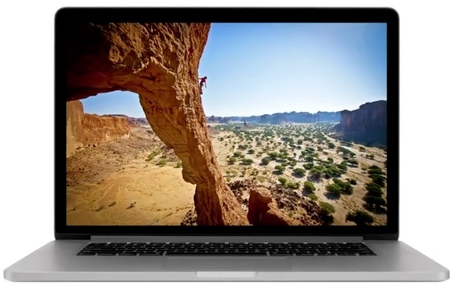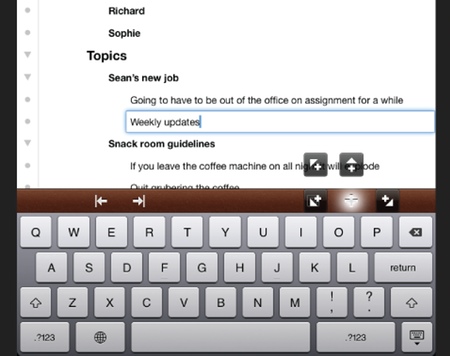Today's issue of TL NewsWire covers a new laptop (see article below), a browser extension that blocks tracking cookies, a billing software migration utility, document assembly software, and an iPad and Android tabelt app for corporate compliance filings. Don't miss the next issue.
Your Documents Have Never Looked This Good
A recent article of ours noted that most lawyers use a computer to practice law. A subscriber quipped that lawyers should instead use their brain. A clever riposte, but let's face it — lawyers spend a lot of time staring at documents on their computer screen. Tired eyes are an occupational hazard, especially since computer and laptop displays lack the sharpness of paper not to mention the tablets and smartphones of a certain company named after a fruit. This company now has its sights set on revolutionizing laptop screens with your eyes as the beneficiaries.
MacBook Pro … in One Sentence
Launched this week, Apple's MacBook Pro is a 15-inch notebook with a "retina display."
The Killer Feature
The MacBook Pro's retina display uses IPS technology, and offers a resolution of 2880 x 1800 pixels at 220 pixels per inch (ppi), the highest available on a laptop. By way of comparison, Apple also updated its non-retina 15-inch MacBook Pro, which has a resolution of 1440 x 900 pixels at 110 ppi. (And in case you're wondering, the new iPad's retina display sports a 2048 x 1536 pixel resolution at 264 ppi.)
Apple claims that the retina display is sharper than a printed page, and that the pixels are too small to see with the naked eye at a typical working distance. It's all about pixel density. The MacBook Pro's 5.1 million tiny pixels resolve at a smaller scale than larger pixels in standard displays. The larger a screen, the more challenging it becomes to increase pixel density, which explains why Apple's first retina display was on the iPhone 4 in 2010.
Increased pixel density has another advantage in addition to clarity — more screen real estate. You can adjust the resolution with a five-position slider that moves between "Larger Text" and "More Space." Thanks to the number of pixels, opting for more space so that you can, for example, place two documents side by side, ratchets down the quality from retina to merely normal. By contrast, a standard laptop display would become blurry.
One disadvantage of all these pixels is that the new MacBook Pro will "pixel double" existing software until developers issue updates (Apple has updated its applications).
The display has some other notable features. It's glossy (not matte), but thanks to the lack of a glass front, it has a 29% higher contrast ratio and 75% less glare than the standard MacBook Pro, as well as a 178-degree viewing angle.
Other Notable Features
The new MacBook Pro can travel. It's 0.71 inches thick, and weighs 4.46 pounds. The battery provides seven hours of use and up to 30 days of standby time.
Other features include 256, 512, or 768 GB of storage on a solid state drive, 8 or 16 GB of memory, a 2.3, 2.6, or 2.7 GHz quad-core Intel Core i7 processor, an Nvidia GeForce GT 650M graphics card, an SDXC card slot, two Thunderbolt and two USB 3 ports, an HDMI port, a 720p HD webcam, dual microphones, stereo speakers, and an "asymmetrical fan" to minimize noise. The MacBook Pro also includes Bluetooth 4.0 and WiFi, but not Gigabit Ethernet or FireWire (you can purchase an adapter if needed).
What Else Should You Know?
Pricing starts at $2,199 for the 2.3 GHz model, and $2,799 for the 2.6 Ghz model. If you max out all the specifications on the latter model, it'll cost you $3,749. The MacBook Pro runs Apple's OS X Lion, and qualifies for a free upgrade to Mountain Lion when it ships. Learn more about MacBook Pro.
How to Receive TL NewsWire
So many products, so little time. In each issue of TL NewsWire, you'll learn about five new products for the legal profession. Pressed for time? The newsletter's innovative articles enable lawyers and law office administrators to quickly understand the function of a product, and zero in on its most important features. The TL NewsWire newsletter is free so don't miss the next issue. Please subscribe now.











